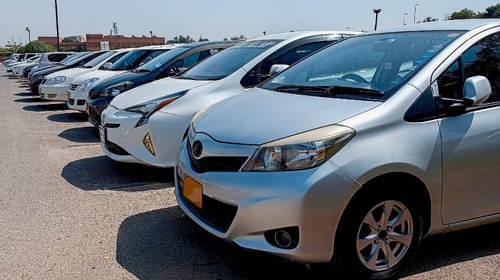Tariff Reforms in Budget 2025-26 to Shift Pakistan Towards Export-Led Growth: PIDE
ISLAMABAD: The Pakistan Institute of Development Economics (PIDE) anticipates that tariff reforms outlined in the Federal Budget 2025–26 will positively influence Pakistan’s economy, facilitating a transition from import substitution to an export-oriented growth strategy.
PIDE’s policy viewpoint, “Impact of Tariff Reduction on Automobile Industry,” authored by Mohammad Shaaf Najib and Dr. Usman Qadir and released on Tuesday, delivers a comprehensive evaluation of the government’s five-year tariff reform plan’s effects on Pakistan’s automotive sector.
The report indicates that Pakistan, in accordance with its economic reform agenda supported by the International Monetary Fund (IMF), has committed to progressively liberalizing specific sectors, including the automotive industry. The five-year tariff reform plan, revealed in the Federal Budget 2025–26, is designed to facilitate this shift from import substitution to export-led growth.
The reform will simplify the customs duty framework, decrease tariff bands, and lower the average tariff rate from 19 percent to 9.5 percent by the Financial Year 2030. Specifically, tariffs on Completely Built Units (CBUs) in the automobile sector will decrease from 20 percent to 15 percent over five years, while surcharges on used vehicles will be phased out by 2030.
For decades, Pakistan has faced recurring economic cycles, hampered by foreign exchange constraints that necessitate IMF bailouts and restrict economic activity whenever the economy overheats. The economy frequently finds itself at this juncture, requiring a complete restart.
According to PIDE’s analysis, these reforms are poised to reshape the automobile industry in several key areas. Domestically, heightened import competition will compel local manufacturers to enhance product quality and operational efficiency. Smaller or less robust brands may face challenges, while established, globally integrated firms are expected to adapt effectively.
Lower tariffs on CBUs and CKD imports will reduce production expenses, enhance affordability, and potentially broaden car ownership in Pakistan. Although some jobs at Original Equipment Manufacturers (OEMs) may be at risk initially, new business and employment opportunities are anticipated in import services, dealerships, after-sales services, and parts markets. The overall impact will largely depend on how existing automobile firms respond and adjust to the policy changes.
On a macroeconomic scale, increased imports could elevate Pakistan’s import bill, exerting pressure on foreign exchange reserves and the exchange rate, unless export growth keeps pace. PIDE advises that the government ensure the availability of necessary foreign exchange to support the increased import bill.
PIDE also emphasizes the importance of policy consistency, cautioning against reversals following initial challenges, as this would be more detrimental to both the automobile industry and consumers. For consumers, the reforms promise greater vehicle choice, improved availability, and competitive pricing.
Furthermore, PIDE advocates for a revised import framework, particularly for used cars, replacing the current system with its multiple schemes.
PIDE points out that loopholes in these schemes are exploited to import used vehicles. It suggests a vehicle quality-based mechanism for commercial vehicle imports to maintain safety standards, ensure fair competition, and enhance consumer welfare.
Emphasis has also been placed on facilitating the development of robust after-sales networks and providing stronger incentives for electric vehicles to promote a smooth transition to environmental sustainability.
The viewpoint concludes that tariff rationalization represents not only an industrial reform but also a critical measure for consumer protection, automotive sector modernization, and integrating Pakistan into global value chains.
PIDE further noted the government’s plan to eliminate “Fifth Schedule” exemptions and reduce protectionist regulatory complexities. However, industry stakeholders have voiced their concerns.
Local Original Equipment Manufacturers (OEMs) warn that a rapid increase in used-car imports, potentially reaching 70,000–80,000 units annually, could severely impact domestic vehicle production and negate progress in local content, employment, and investment.
In parallel, these tariff reductions support broader environmental objectives. The government intends to introduce a carbon levy and incentives for electric vehicles (EVs), aiming for 30 percent EV adoption among new vehicles by 2030. A proposed petrol-diesel levy could generate Rs25–30 billion annually over five years to fund EV infrastructure development.



Comments (0)
No comments yet. Be the first to comment!
Leave a Comment